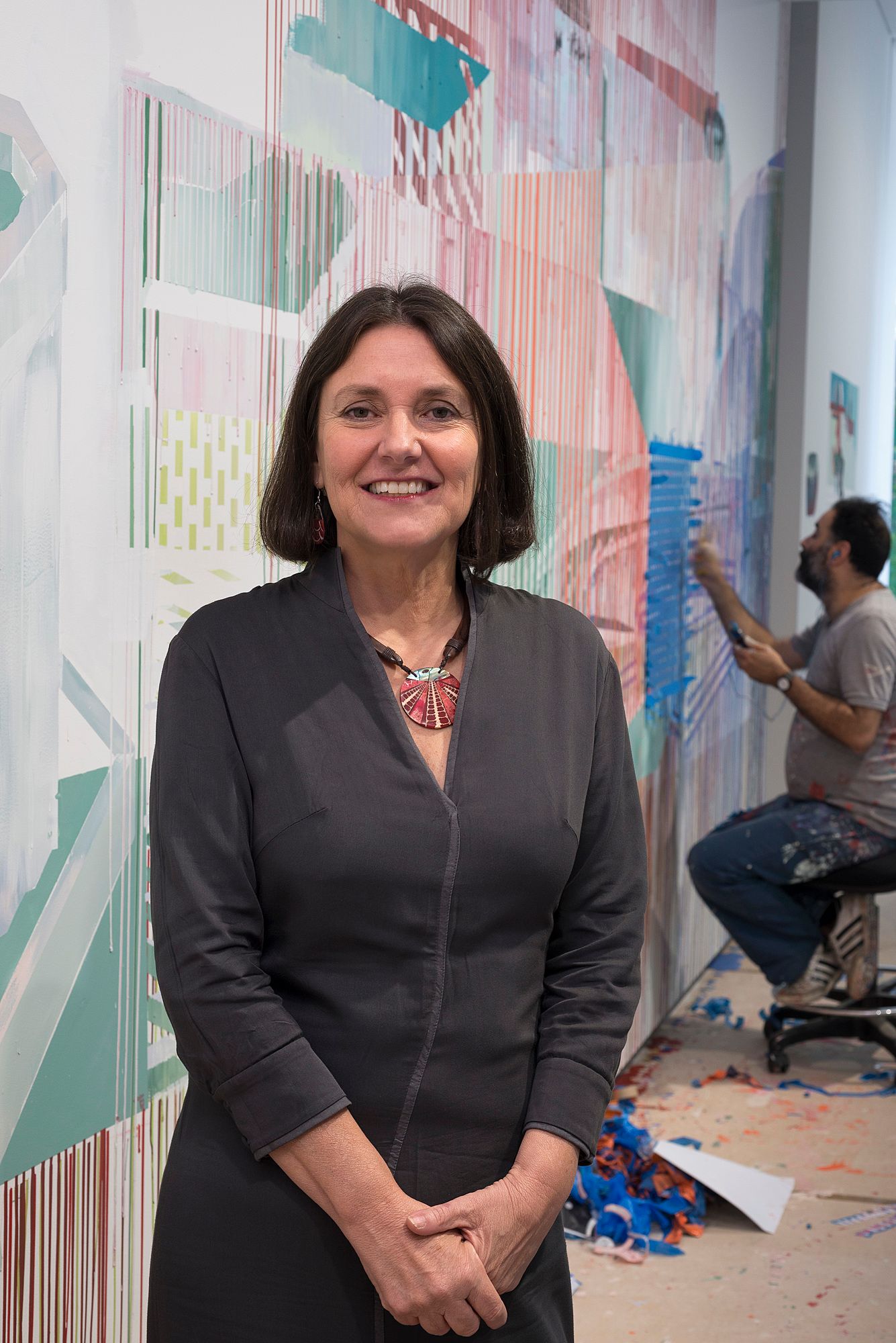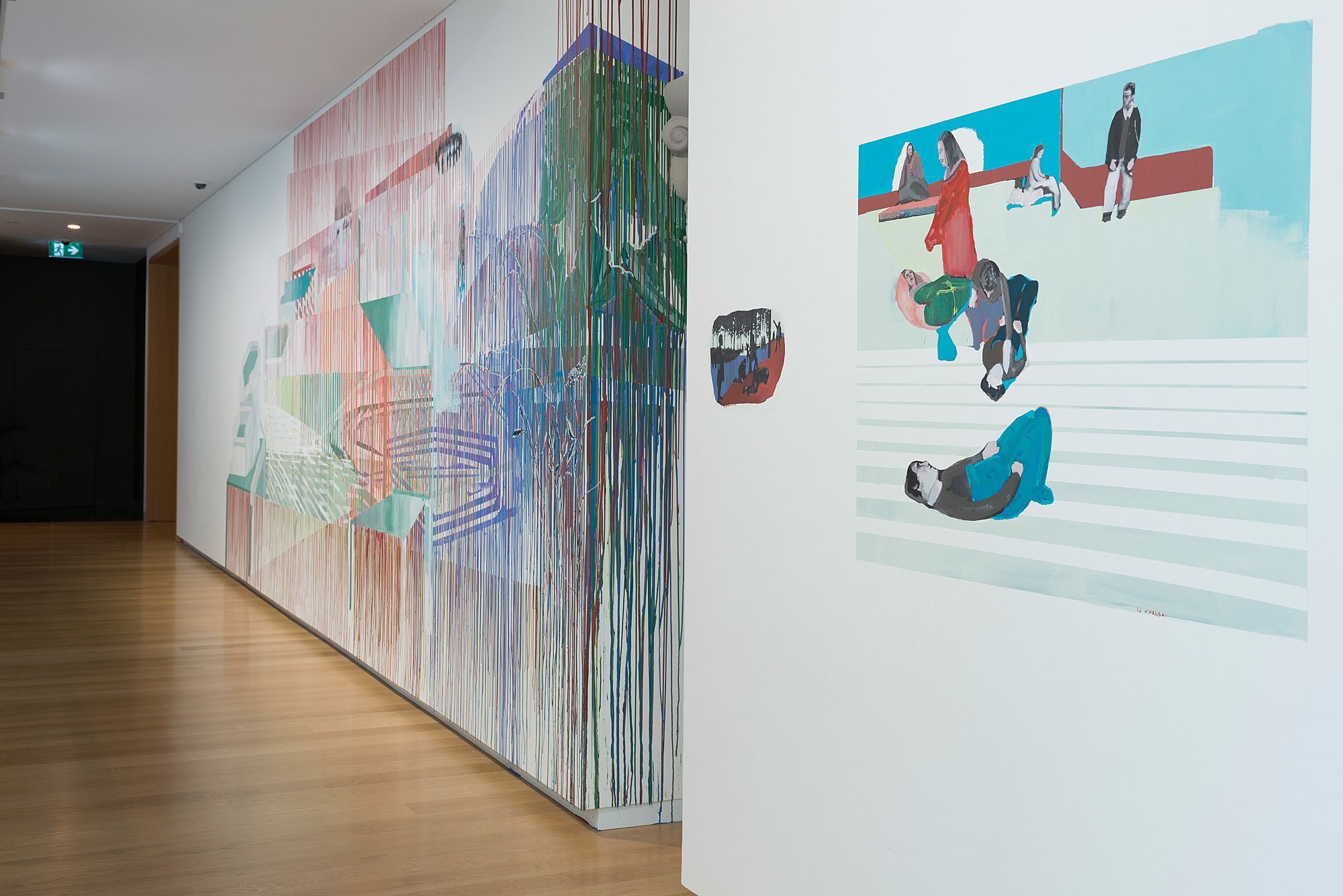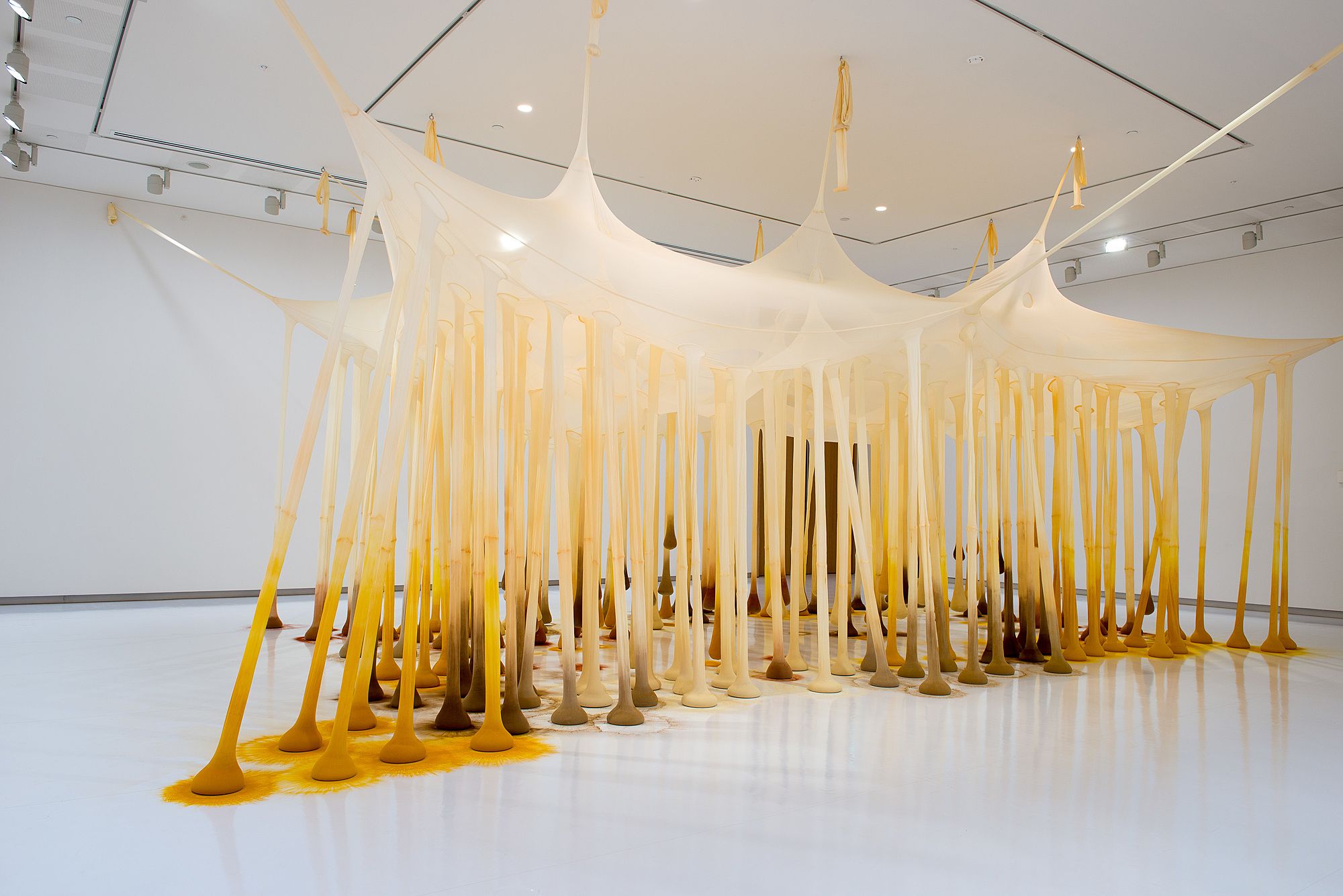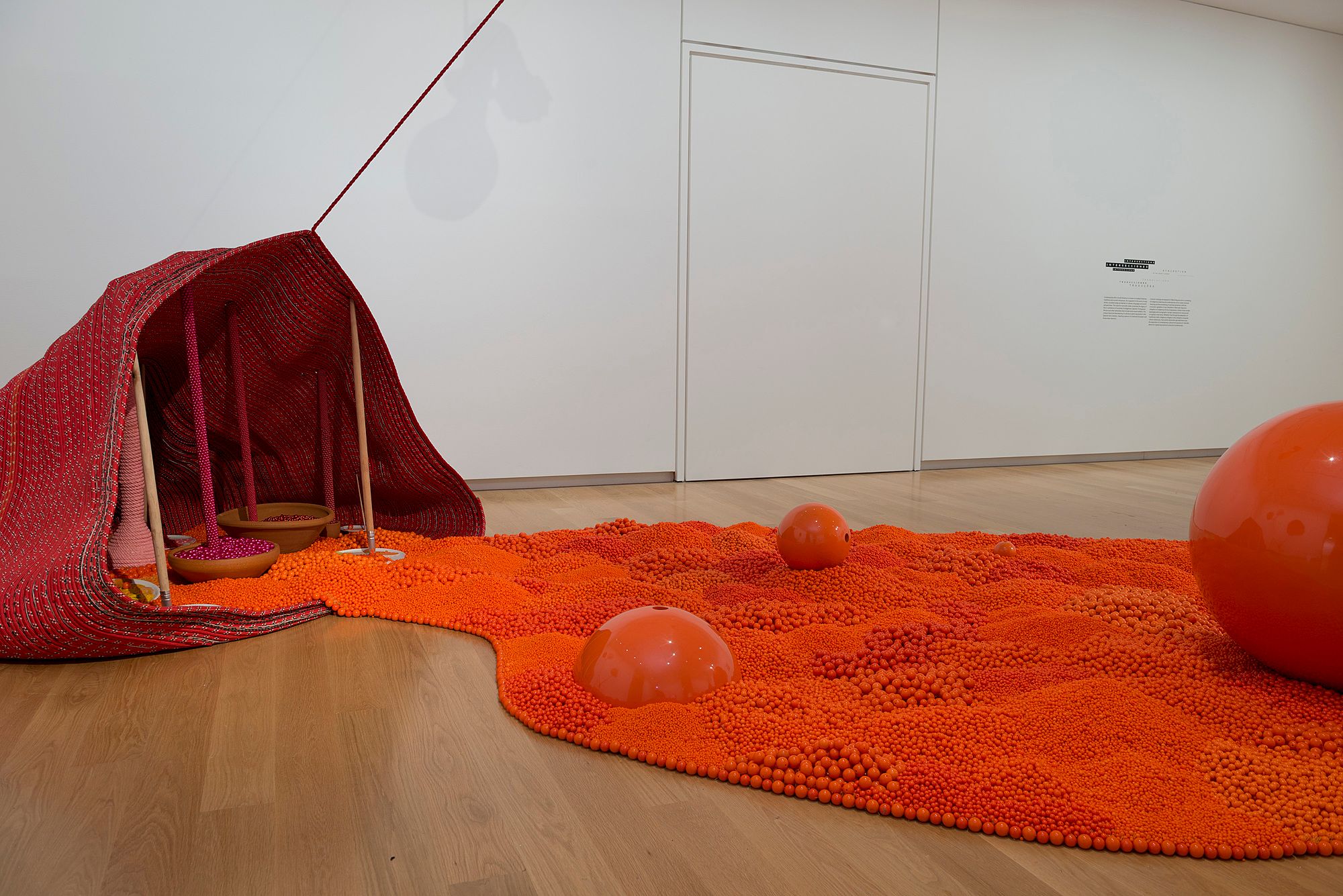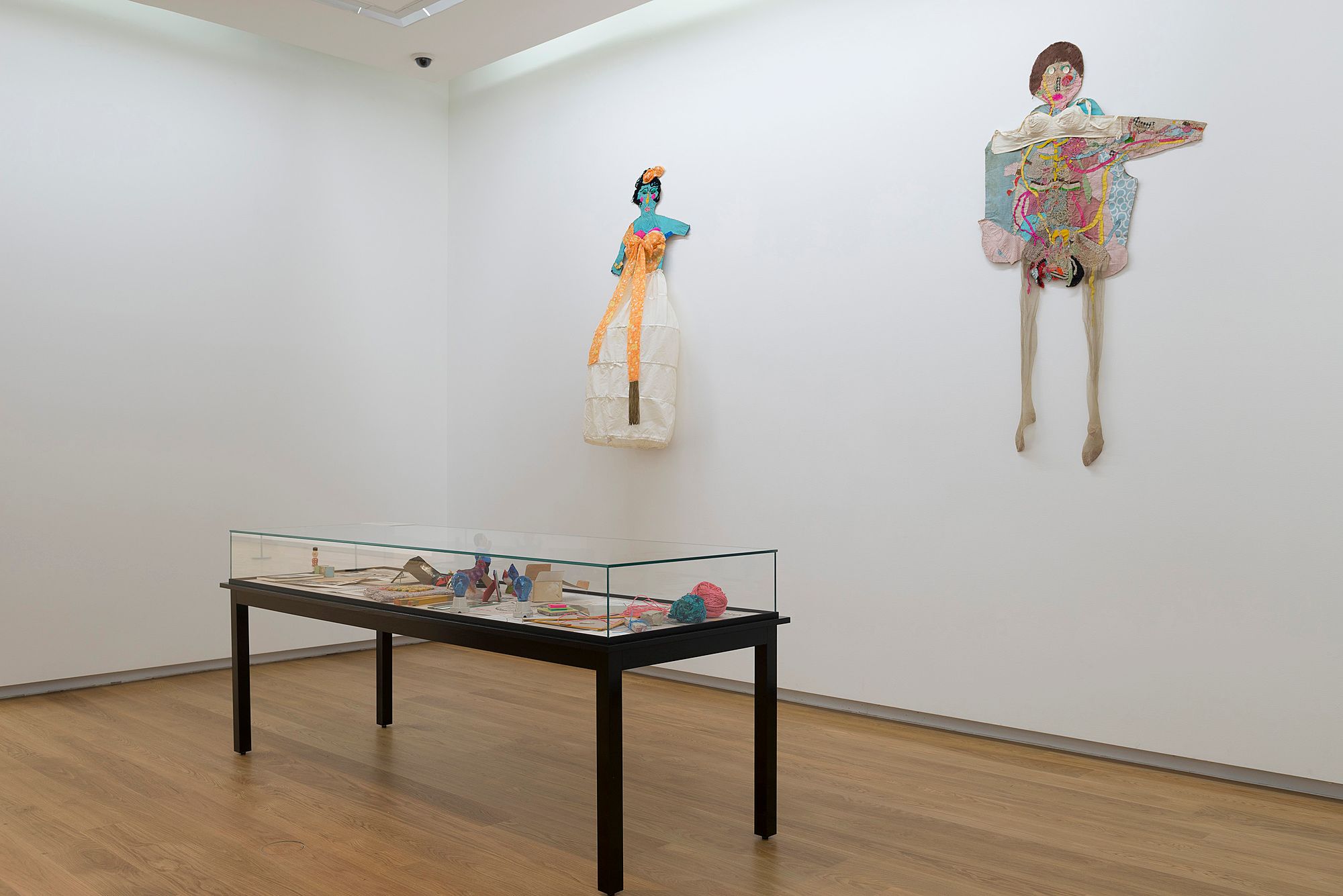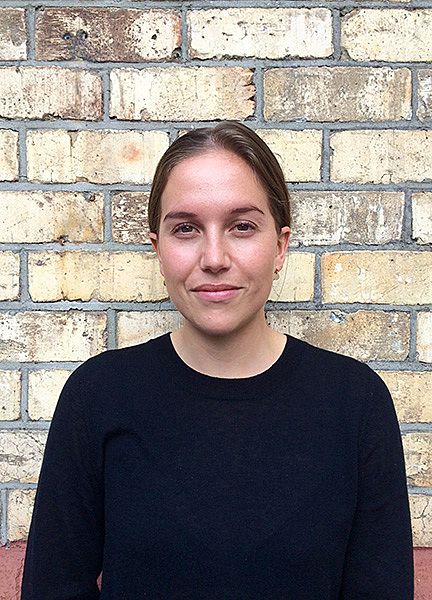Proyectos Corazón/Heart Projects: An Interview with Beatriz Bustos Oyanedel
Rosa Gubay talks art from South America with curator Beatriz Bustos Oyanedel.
Rosa Gubay talks art from South America with curator Beatriz Bustos Oyanedel.
Space to Dream: Recent Art from South America is remarkable for being the first major exhibition of art from South America to be held in Australasia. The project – led by Zara Stanhope, Principal Curator at Auckland Art Gallery Toi o Tāmaki, and independent Chilean curator Beatriz Bustos Oyanedel – draws together the work of 41 artists working in South America from the 1960s to the present. Rosa Gubay spoke with Bustos Oyanedel, who provided insight into the exhibition, the importance of South-South exchange, and the nature of curatorial practice today.
*
RG: How did you get into exhibition making? I’ve seen that you yourself studied visual art.
BBO: Yes, I studied toward a Master in Visual Arts at the Universidad de Chile. The contemporary art world in Chile has developed hugely since the 1990s. It was a period in which our society began to open to the world, after the dark period of the dictatorship between 1973 and 1990.
Despite that, in Chile, where I live, there are not many opportunities to curate exhibitions. I have managed to live in Chile with my family, while travelling to work in a number of South American countries like Colombia, Bolivia, and Brazil. Except for in Brazil, of course, the contemporary art scene is still very small here.
I love to live in South America and my strength and creativity comes by working and living here. I must say most of the time it is not easy to work with South American museums, but it is a challenge that always keeps my spirit high. I work not only to create exhibitions, but also to develop social and cultural projects with communities. I believe culture can be a tool that contributes to the development of society.
Alongside working with artists from South America, which is my expertise, I have also made challenging projects in South America with artists such as Jan Fabre and Christian Boltanski. These are what I call my proyectos corazón, ‘heart projects’. Space to Dream became such a project, the kind of thing I love and engage in with all of my passion.
I work not only to create exhibitions, but also to develop social and cultural projects with communities. I believe culture can be a tool that contributes to the development of society.
RG: What first interested you in curating?
BBO: I think there are different kinds of curators in South America, ones who are mostly writers, and others who get involved with the whole process, like the installation and establishing relationships with artists. For me, the relationship with the artist is the most important thing. To establish bonds, to try to translate into exhibitions what matters to artists – that matters to me. To get involved in research, writing, and design, the multidisciplinary aspects of an exhibition, is what’s interesting.
RG: Having previously held positions at a number of significant institutions and organisations, such as the Museum of Contemporary Art in Santiago, how do you compare that to working independently?
BBO: I love to work independently, because in a year I can work with three or four different institutions and that gives me freedom. All institutions have different missions. So in this way I can get to work from different perspectives and be very free.
RG: And what sort of artists or exhibitions do you gravitate toward more generally?
BBO: Artists and exhibitions that work with context, look into social issues, and search for meaning.
RG: What was the initial idea behind Space to Dream? How did this particular exhibition come about?
BBO: The intention was to present a broad picture of what is happening in the art of South America, but also to introduce the artists who were meaningful to members of younger generations, and to present a show for all of the family as well.
RG: You and Zara Stanhope initially connected through the South Project, could you explain a little about this South-South exchange and, I suppose, give an idea of the significance for you of an exchange like this?
BBO: I consider it very important to find new approaches to curating that allow us to gain better understanding. It is a matter of urgency today, when we see all that is happening around the world: wars, inequity, lack of freedom. In the South we have new ideas to share, but more than ideas we can share ‘ways of living’ – showing how we can live together in a changing world. We can contribute by expressing this through the language of contemporary art.
In the South we have new ideas to share, but more than ideas we can share ‘ways of living’ – showing how we can live together in a changing world. We can contribute by expressing this through the language of contemporary art.
RG: I heard you speak at Auckland Art Gallery and the way you framed the exhibition really interested me. You made clear the importance of speaking about art from South America as opposed to South American art. Could you expand a little on this?
BBO: In speaking of art from South America, we begin to address issues of contemporaneity and identity, and also the concept of nations. These subjects need to be reviewed from a perspective that includes the many different communities we have in South America, including indigenous communities. We have a big scene of people producing what would historically have been called ‘crafts’. I think that raises the whole question of what ‘South American art’ is and what the world is today. Everybody’s travelling, you know. There is diaspora all over.
RG: I find that really interesting, this want to level the field for craft, indigenous practice, and art, and I think perhaps a comparison could be made to a lot of artists working in New Zealand today, like Judy Darragh or Ani O’Neill.
BBO: Yes, because that goes back to who established the classifications of what is and what is not art, and also who decided, “This should be in the museum and this shouldn’t.” I think we have to rethink these concepts. And in a way that is what curating today is all about.
In this exhibition you will see documentation presented as quotation, you will see illustration presented as masterpiece. I think these are things that need to be reviewed. Everything seems to be crossing nowadays because of new media and the internet.
RG: The exhibition, as well as showing work by more recent artists, draws in a number of what have been termed ‘Change Makers’. Lygia Clark and Hélio Oiticica are notable among them, alongside artists like Virginia Errázuriz and Violeta Parra, who are less well known here. How were these Change Makers chosen?
BBO: We asked the artists from younger generations to mention who had been the main influential figures for them.
In some South American countries, there are not many arts publications. Research is hidden in theses and papers in university libraries and you can also find traces of history through interviews. This was all part of the research done for this exhibition, and I find it fascinating. This is what I mean when I talk about a continent that is in a process of construction. I wanted to include the voice of those who have been deleted from the so-called ‘official history’.
Violeta Parra might not be known outside Chile, but in Chile a museum has recently opened dedicated to her work. As it only opened in October 2015, we weren’t able to acquire loans from the museum, so the curatorial assistants Maya Errázuriz and Amparo Irarrázaval went to flea markets and door-to-door searching for documents about Violeta. Maya and Amparo also worked organising Virginia’s documents at her studio. As I mentioned before, we are a continent still to be discovered, a continent that is just opening to the world.
RG: When you were selecting the artists, you also referred to “leaving out those artists who were working on the surface” …
BBO: Yes, that was a personal choice. I’m not really interested in those artists working in relation to a history of art that is built within European concepts of what art is today.
We are a continent still to be discovered, a continent that is just opening to the world.
RG: In the text for the exhibition “Nuestro Sitio”, Artistas de América del Sur (2012) you refer to South America as a region that “had been subordinate to the domination of Eurocentric flows, on the edge of the economic and cultural world”. Do you still think South America sits in this kind of cultural blind spot to the West?
BBO: It’s rising, it’s rising. I think what we need to change is the way things are being analysed. Not with the knowledge of the occidente [West], but with the knowledge that includes thoughts that are generated inside South America.
RG: I’m aware some people find the term ‘South America’ problematic in the way it sets up an arbitrary opposition to North America. Do you find the term problematic in its use?
BBO: No, I love it. I find the concept of ‘Latin America’ more problematic, because what is ‘Latin’? ‘Latin’ needs to be discussed.
Space to Dream: Recent Art from South America
Auckland Art Gallery Toi o Tāmaki
7 May to 18 September 2016
General admission $15

